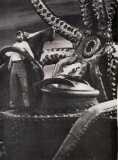
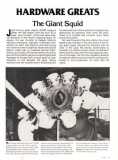
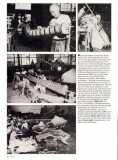
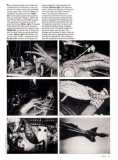
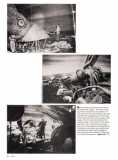
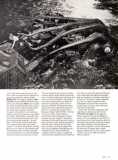
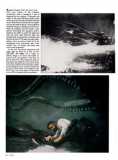
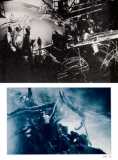
Jules Verne’s great classic 20,000 Leagues Under the Sea begins with the hunt for a great “sea monster” which has been sinking warships in the Pacific shipping lanes. Of course, the sea monster is Captain Nemo’s fabulous submarine, Nautilus. In Disney’s film version we learn that Nemo’s wife and young son were tortured to death by those who would seek to make war on mankind and set themselves up as rulers of the world. Nemo refused to give up his scientific genius to warmongers and managed to escape with a small band of loyal followers to live beneath the seas, taking nothing from the outside world. Embittered by his personal loss, Nemo seeks his vengeance by destroying all warships that cross his path. Tales of a terrible sea monster soon reach around the world. Yet, near the end of the story, Nemo, too, must battle a sea monster in his own world. A terrifying giant squid attacks the Nautilus and its crew. It fell upon the Disney technicians to recreate in a motion picture studio the battle of Nemo and his crew with this near legendary denizen of the deep. The film won Academy Awards for special effects and art direction and has continued to thrill audiences for more than 25 years. Walt Disney had high hopes for 20,000 Leagues under the Sea. It was to be his first live-action film venture made in the United States and it was the second CinemaScope feature to go into production. The climactic battle with the giant squid is one of the best-remembered sequences in Disney's film history. But before Disney was satisfied, the entire battle had to be shot twice and two different squids had to be built! [img]Left:James Mason as Captain Memo is threatened by the grasping tentacles of the squid in version number one, shot before a fiery sunset sky drop, which Disney rejected. Above: Sculptor Chris Mueller at work on the body of the squid.[/img]
| Id | 2914 |
|---|---|
| Availability | Free |
| Inserted | 2016-11-04 |